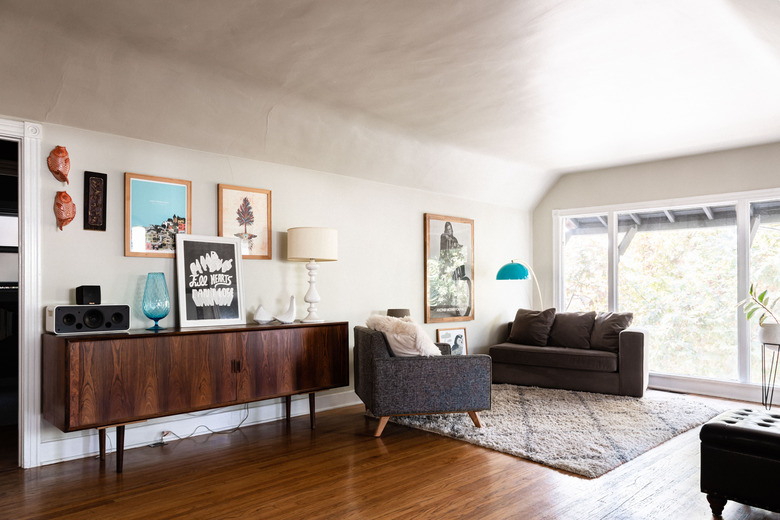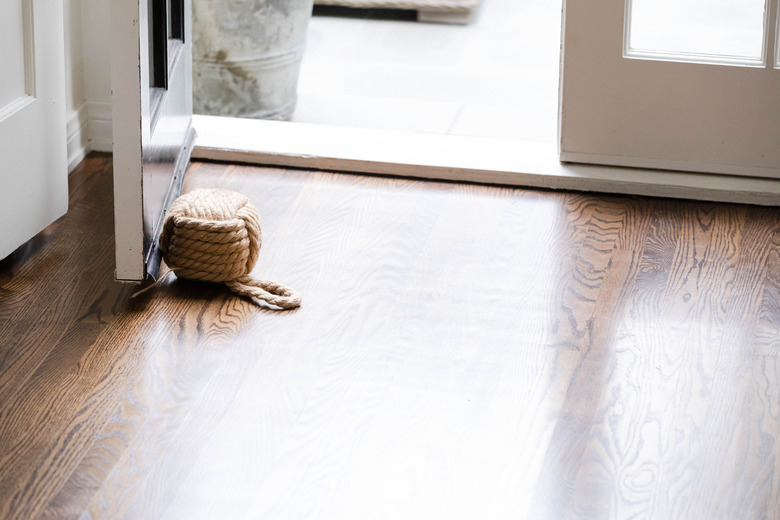Walnut Flooring: A Homeowner's Guide
When it comes to hardwood flooring, no two woods are exactly alike. The same holds true even within one species of wood, such as walnut. Some varieties are much harder than others, so for the sake of long-term durability, it's best to purchase the hardest walnut flooring you can find.
Brazilian Walnut: Incredibly Hard
Brazilian Walnut: Incredibly Hard
Brazilian walnut, also known as ipe, is one of the hardest types of wood available for floors. This variety of walnut ranks at 3,684 on the Janka hardness scale, putting it near the top of the hardness chart. As a comparison, the softest wood, balsa, scores 100 on the Janka scale. Red oak, another common hardwood flooring material, sits in the middle of the chart at 1,290. This oak is often used to compare other woods, as it's both workable and durable.
Brazilian walnut is so hard that it's even difficult to nail, and it's often used for projects such as outdoor furniture and tool handles thanks to its durability. It is naturally resistant to mildew, rot, fires and even insects. Its sapwood has a slightly yellow hue, while the heartwood ranges from reddish to yellowish brown or almost black. With planks of Brazilian walnut flooring, the grain is relatively tight with streaks of darker brown throughout. Over the years, the wood's color will lighten a little.
Ipe wood comes largely from trees in South America, Mexico and Central America, according to MacDonald Hardwoods. Ask your walnut hardwood flooring retailer if its ipe is sustainably sourced, meaning it comes from a location that grows trees specifically for timber, planting new trees to take the place of the timber. While it's not as commonplace now, some retailers sell wood from illegally clear-cut forests, which has a devastating impact on the surrounding environment.
American Black Walnut: Softer Wood
American Black Walnut: Softer Wood
American black walnut, also known as American walnut or black walnut, ranks 1,010 on the Janka scale, considerably softer than Brazilian walnut or even red oak. It's still a common flooring choice, as it's dense and somewhat shock resistant. The sapwood is nearly white to light brown with a tight, open grain. Its heartwood is a deep reddish brown to nearly black, so this is a good option if you prefer a dark floor that doesn't require a stain to achieve that depth of color. The contrasting light and dark tones of sapwood and heartwood create a striking color variation that looks good in dining rooms, living rooms, bedrooms and hallways.
American walnut comes primarily from the eastern central United States. Since this wood is easy with which to work and is attractive, it's also used to make furniture, cabinetry and paneling. As a domestic wood, it's up to several dollars cheaper per square foot than Brazilian plank flooring. Expect to pay an average of $4 to $6 per square foot for black walnut solid hardwood flooring, compared to $4 to $9 for Brazilian walnut flooring. This price is for the wood alone; add at least another $2 per square foot for installation or even $4 for Brazilian walnut due to the hardness of the wood.
Walnut Finish and Plank Options
Walnut Finish and Plank Options
Brazilian or black walnut hardwood flooring is available as prefinished or unfinished boards and planks of varying widths. Unfinished planks may cost a little less up front than the same-size planks prefinished, but the prefinished ones tend to be more durable and have more consistent coloring. Unfinished planks should at the very least be sealed after installation, which adds to the total cost of the floor, even if you seal it yourself. You'll also have to wait for days before being able to move furniture into the room since the sealant needs time to harden and cure.
Both Brazilian and black walnut planks are sold in a variety of widths, allowing you to customize the look of the floor. The narrowest planks generally offered by retailers are 2 1/4-inches wide, with other common options available, such as 3-, 4-, 5- and 6-inch-wide plank sizes. Wide-plank retailers sometimes offer 8-inch-wide Brazilian walnut floor planks in sets of varying lengths. More wide-plank options are available for black walnut since this wood is easier to obtain than Brazilian walnut.
Engineered Hardwood vs. Solid Walnut
Engineered Hardwood vs. Solid Walnut
Walnut engineered hardwood offers an alternative to solid American walnut floors, and it is ideal for areas where humidity levels change frequently, such as in the bathroom. An engineered walnut floor is made of layers of other wood with the grain in opposing directions, which helps prevent warping. The top wood layer is walnut. Engineered walnut floors tend to be less expensive than solid walnut as well.
Solid walnut flooring is seldom used in a bathroom or basement, although Brazilian walnut holds up well even when used as a shower floor, according to Advantage Lumber. Brazilian walnut has a natural water resistance that makes it a great choice for virtually any room in the home. Solid walnut also offers options beyond just varying colors of the grain and a shiny or matte finish. Hand-scraped walnut gives a handmade look to each board and is ideal for a rustic or even industrial decor scheme. This isn't an option for engineered walnut, which always has a smooth, level face.
Solid walnut also lasts longer than engineered walnut in most cases. Virtually any solid hardwood floor can be refinished many times, extending its useful life through generations. Since the veneer on an engineered floor is relatively thin, this type of flooring can only be refinished a couple times before wearing a hole through the walnut veneer.
Walnut Floor Care
Walnut Floor Care
Caring for either black walnut or Brazilian walnut is much like taking care of any hardwood floor. Dust or sweep the floor a couple times per week, removing any debris that may scratch the sealant or the floor. Use rugs or felt pads under furniture legs in the living room and dining room to protect softer American walnut floors.
Wash the floor as needed with a wood-safe floor cleaning product that is recommended by the flooring manufacturer or supplier. Avoid using harsh cleaning chemicals or bleach, as these may dull the finish. Keep the mop damp and not sopping wet to avoid soaking the floor. Wipe up excess moisture after mopping and rinsing the floor using a lint-free absorbent towel or cloth. Clean up spills as soon as you notice them to prevent staining; this also ensures that sticky substances don't attract dirt, which makes the floor look less than its best.
It's also a good idea to kick off your outdoor shoes before walking on walnut floors, as this helps prevent tracked-in dirt, mud, salt and debris that could scratch the floor. Keep an old towel handy to wipe off your pet's paws after he spends time outside on a damp day.
References
- Floor Coverings International: Walnut Hardwood Flooring: American Vs. Brazilian
- Advantage Lumber: Brazilian Walnut Flooring
- MacDonald Hardwoods: Species Profile: Brazilian Walnut (Ipe)
- ImproveNet: How Much Does Walnut Flooring Cost?
- Carlisle Wide Plank Floors: Engineered Walnut Flooring
- FlooringAmerica: What Is Engineered Flooring?
- Advantage Lumber: Ipe Wood Shower and Jetted Bathtub
- Murphy Oil Soap: 10 Floor Cleaning Tips That Keep Hardwood Floors Shining


